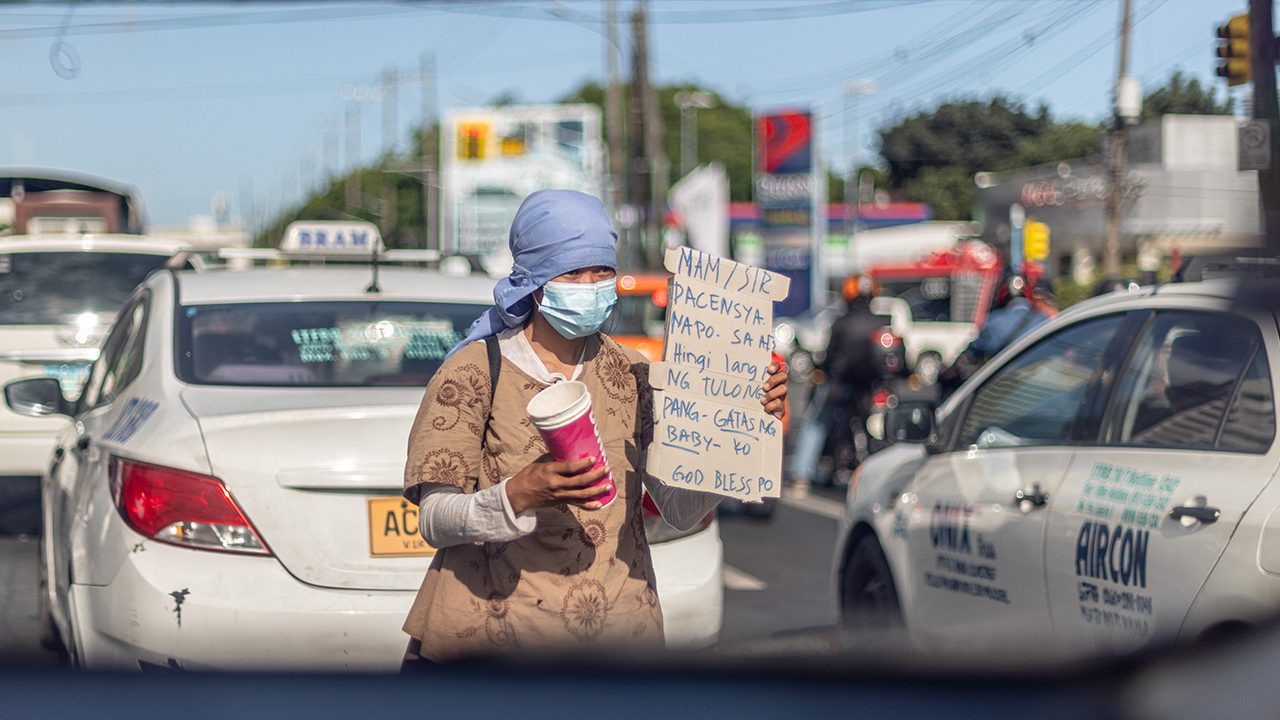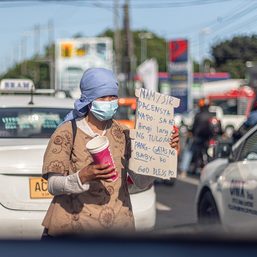SUMMARY
This is AI generated summarization, which may have errors. For context, always refer to the full article.

GENERAL SANTOS, Philippines – Cashless begging, a concerning trend that has emerged in South Cotabato, has caught the attention of officials and raised suspicions of involvement by crime rings.
South Governor Reynaldo Tamayo Jr. took to cautioning residents on Wednesday, May 30, about the potential risks of being too generous to beggars, as their goodwill may unwittingly support illicit money-making operations.
Tamayo has expressed alarm as reports of crime syndicates exploiting beggars for their fund-raising endeavors prompted authorities to launch investigations.
He expressed his apprehensions after seeing a social media post that showed a child asking people for alms via QR codes for cashless transactions.
Tamayo, who also serves as vice chairman of the National Anti-Poverty Commission (NAPC) and head of the Union of Local Authorities in the Philippines (ULAP), said begging by disadvantaged people in public places presents one of the many challenges faced by local officials that require a balance between compassion and caution.
He warned that a 1978 law against mendicancy remains in effect and penalizes the recipients of alms and also holds the givers accountable.
Tamayo said the law, made during the first Marcos administration, exists to shield children and even infants from exploitation in terms of mendicancy.
He warned that parents using their children for street begging can be fined and even jailed.
Mendicancy is a result of chronic poverty, limited healthcare, recurrent natural disasters, a disorganized social structure, and insufficient education – a persistent problem in various regions.
The 1978 law banning mendicancy has not prevented the poor from begging on the streets in South Cotabato and elsewhere in the country, especially in urban areas where children and infants are used to elicit sympathy, exposing them to dangers.
A retired school teacher, Herman Silebero, frowned over Tamayo’s pronouncements about his concerns and warning.
“Why go after the beggars? Government must help them instead,” Silebero said.
The Philippine Statistics Authority (PSA), in a 2021 report, said a staggering 18.1% of the country’s nearly 110 million population live below the poverty line, a sobering statistic that shows that one in every five Filipinos grapples with poverty.
Tamayo’s proposed solution is to consolidate all government anti-poverty programs to provide a comprehensive solution to the problem.
Currently, around 4.4 million Filipinos living below the poverty line are enrolled in the Pantawid Pamilyang Pilipino Program (4Ps), a national poverty reduction strategy implemented by the government.
Tamayo said there are still loopholes in efforts to help the marginalized sector that need to be addressed, and local governments play a crucial role, particularly through an extensive community-based monitoring system.
He said the ULAP, which he heads, would bring the matter to the attention of local government officials so they could discuss it and devise strategies to address the problem that has long been pronounced in the country’s urban centers.
A Social Weather Survey conducted from December 10-14, 2022, showed that a majority of Filipino families rated themselves as poor, with 51% falling into this category.
About 31% of families considered themselves on the borderline between poor and not poor, while 19% rated themselves as not poor.
The estimated number of self-rated poor families stood at 12.9 million in December 2022, slightly higher than the 12.6 million reported in October 2022. – Rappler.com
1 comment
How does this make you feel?










12% Don’t care, really?